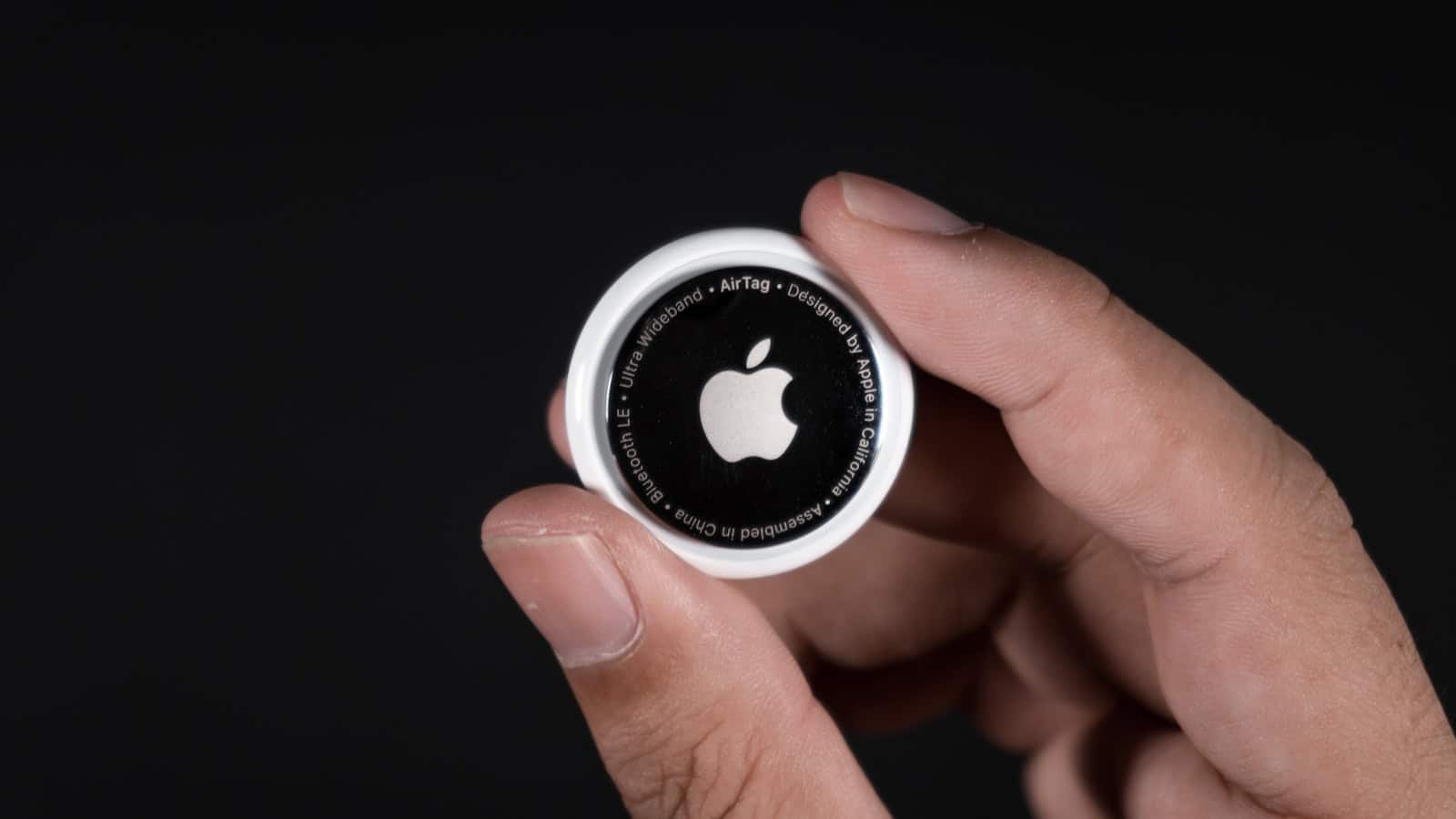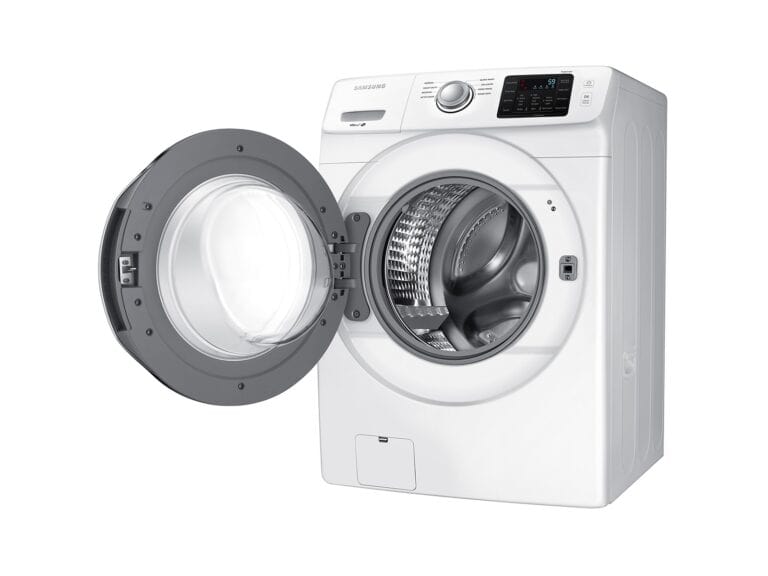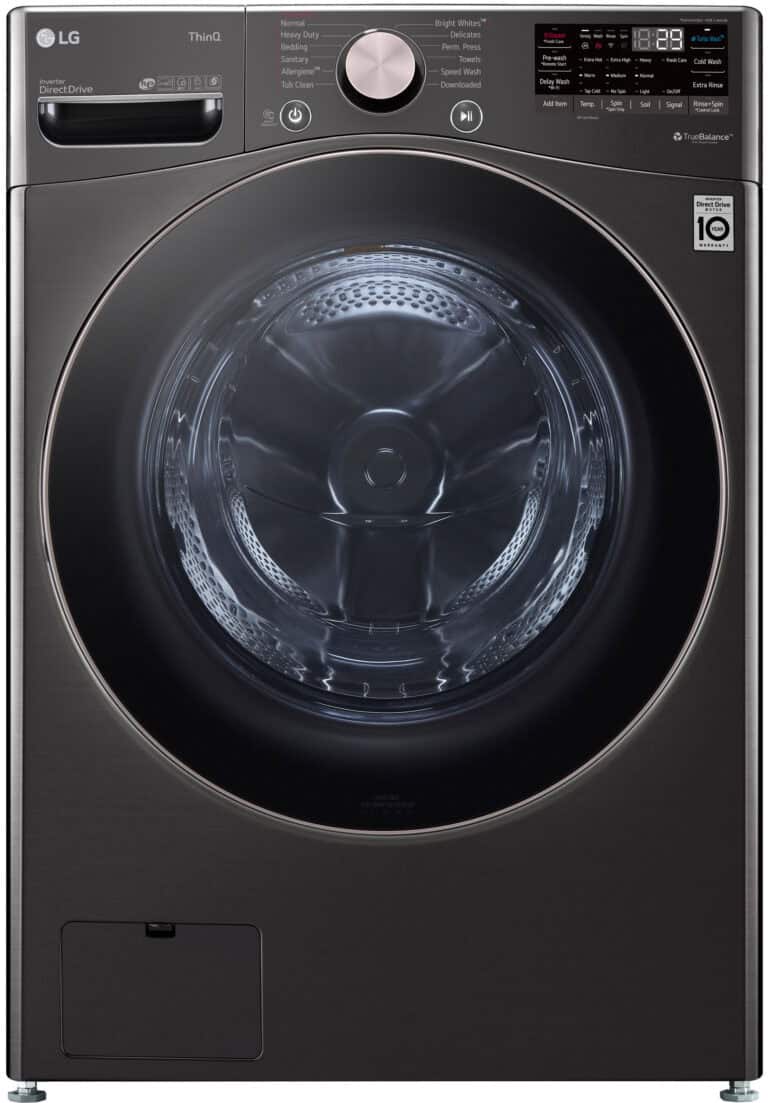
Apple’s long-awaited second-generation AirTag is expected to launch in mid-2025, and based on multiple reports from trusted insiders—including Bloomberg’s Mark Gurman and leaker Kosutami—it may debut as early as June, aligning with Apple’s WWDC 2025 event on the 9th. This upcoming version looks to be more than just a mild refresh—it could significantly expand what we expect from personal item trackers.
Here’s a breakdown of what’s rumored (and likely) for AirTag 2, including key upgrades that could make it a must-have device for Apple users in 2025.

AirTag 2 Is Coming in 2025: What to Expect from Apple’s Next-Gen Tracker
Major Improvements Coming in AirTag 2
● Dramatically Extended Range with New UWB Chip
AirTag 2 is expected to feature Apple’s next-generation Ultra Wideband (UWB) chip, offering improved precision tracking and tripling the range to nearly 90 meters (295 feet). That’s a massive upgrade over the original’s 30-meter (98 feet) range and could make AirTags much more effective in open or cluttered environments, especially when used with Find My network enhancements on iOS 18.
● Upgraded Anti-Stalking Protections
Apple has come under scrutiny in recent years for privacy concerns surrounding unwanted AirTag tracking. In response, AirTag 2 is said to include a tamper-resistant speaker, making it harder to disable. It will also enhance proactive safety alerts for iPhone users, notifying them faster and more reliably if an unknown tracker is traveling with them. These upgrades align with Apple’s broader push toward responsible location-tracking technologies.
● Vision Pro Integration with AR Tracking
Perhaps one of the most futuristic features: AirTag 2 is reportedly being developed with Apple Vision Pro compatibility in mind. This would allow users to visually locate misplaced items using augmented reality overlays, essentially turning your living room into a heads-up map of your tracked belongings. With the Vision Pro set to get its own ecosystem boost in late 2025, this integration could be a major selling point.
● Longer Battery Life
Battery performance has always been a strong point for AirTags, but the second-gen model may take things even further. Apple is rumored to be introducing new low-power optimizations that could extend the tracker’s lifespan to up to 36 months—double that of the current model under typical usage. That would push AirTag ahead of many competitors, including offerings from Tile and Chipolo.
● Subtle Design Tweaks
The overall design is expected to remain nearly identical to maintain compatibility with existing accessories, but Apple may offer a new matte black variant for the first time. The AirTag 2 will likely continue to offer IP67 water and dust resistance, keeping it just as rugged and portable as before.
Price and Launch Timing
Despite the tech upgrades, Apple is rumored to maintain its original pricing strategy:
- $29 for a single AirTag
- $99 for a 4-pack bundle
If history is any guide, pre-orders could open immediately following the WWDC 2025 keynote, with retail availability beginning later that month or in early July.
Why This Update Matters
Since its 2021 debut, the AirTag has become a go-to item locator, especially for Apple users who rely heavily on the Find My ecosystem. With competitors like Samsung’s Galaxy SmartTag2 already pushing into AR tracking and UWB improvements, Apple’s refresh is not only timely but necessary.
By boosting tracking range, improving safety, adding AR compatibility, and doubling the battery life, the AirTag 2 positions itself as a smarter, more powerful everyday tool for locating everything from keys to luggage—and now with spatial computing in mind.
If you’ve been holding off on jumping into Apple’s tracker ecosystem, 2025 might finally be the right time to tag in.
AirTags: How They Work
Have you ever misplaced your keys or luggage while traveling? Apple’s AirTags offer a simple solution to keep track of important items. These small, coin-shaped devices use Apple’s vast network of devices to help you locate your belongings with impressive accuracy.
AirTags work by emitting a Bluetooth signal that connects to nearby Apple devices through the Find My network. When your AirTag is within Bluetooth range, your iPhone can directly detect it. If it’s farther away, the AirTag communicates with other Apple devices in its vicinity, which anonymously relay its location back to you. This creates a massive network of devices helping you find your lost items without compromising privacy.
The technology is particularly useful for travelers who want to track their bags or anyone prone to misplacing everyday items. Each AirTag broadcasts its unique ID to iOS devices within range, making them effective in crowded areas where many Apple devices are present.
Key Takeaways
- AirTags use Bluetooth technology and Apple’s Find My network to track items through millions of Apple devices worldwide.
- The location tracking works both at close range through direct Bluetooth connection and at greater distances through other nearby iPhones.
- Each AirTag broadcasts a unique identifier that maintains user privacy while still allowing accurate item location.
Understanding AirTags
AirTags are small tracking devices that use advanced technology to help users locate their belongings. These coin-sized trackers work through a combination of wireless technologies and Apple’s vast network of devices.
Design and Components
AirTags feature a simple, elegant design with a white plastic body and stainless steel back that can be personalized with engravings. Each device measures just 1.26 inches in diameter and weighs 11 grams, making them small enough to attach to keys, bags, or other items.
Inside the AirTag is a CR2032 battery that powers the device for approximately one year before needing replacement. The battery is user-replaceable, which adds to the convenience factor.
The device contains several key technologies: a Bluetooth Low Energy (BLE) transmitter, an Ultra-Wideband chip for precise location tracking, and NFC capability for tap interactions. There’s also a small speaker that plays sounds to help locate the AirTag when it’s nearby but not visible.
How AirTags Connect with Devices
AirTags use a clever system to help locate lost items. They primarily work through Bluetooth signals that connect to Apple’s Find My network to pinpoint their location.
When an AirTag is away from its owner, it broadcasts a unique identifier to nearby Apple devices. These devices anonymously relay the location to Apple’s servers, which then show the location to the owner. This process is encrypted and private.
For more precise finding, AirTags use Ultra-Wideband technology (in newer iPhone models) to enable directional finding with on-screen arrows and distance indicators. This makes it much easier to locate items in crowded or complex environments.
The AirTag can also be put into “Lost Mode,” sending a notification when it’s detected by a device in the network.
Compatibility with Apple Products
AirTags work exclusively within the Apple ecosystem and require an iPhone or iPad with the latest iOS version to set up and use. The setup process is straightforward, similar to pairing AirPods.
To get the full AirTag experience, users need an iPhone 11 or newer with Ultra-Wideband chips for the precision finding feature. However, basic tracking functionality works with iPhone models running iOS 14.5 or later.
The Find My app comes pre-installed on Apple devices and serves as the control center for AirTags. Through this app, users can view locations, play sounds, and activate Lost Mode for their AirTags.
iPad models with recent iOS versions can also be used to track AirTags, although they lack the precision finding capabilities of newer iPhones. Mac computers with the Find My app can view AirTag locations as well.
Location Tracking Explained
AirTags use a combination of technologies to help users find lost items with remarkable accuracy. The system relies on Apple’s vast network of devices and specialized hardware to pinpoint locations in different situations.
Precision Finding
Precision Finding transforms the item-finding experience by providing exact directional guidance to your AirTag. This feature works through Ultra-Wideband technology (UWB) which creates a precise spatial awareness between your iPhone and the AirTag.
When you’re searching for an item, your iPhone screen displays an arrow pointing toward the AirTag’s location. The distance appears in feet or meters, updating in real-time as you move.
This technology only works with iPhone 11 models and newer since older devices lack the U1 chip needed for UWB functionality. The system uses a combination of camera input, ARKit, accelerometer data, and gyroscope measurements to provide this highly accurate guidance.
For optimal performance, Precision Finding requires being within 30 feet of the AirTag.
Find My Network and Location Info
The true power of AirTags comes from Apple’s Find My network, which leverages hundreds of millions of Apple devices worldwide. When an AirTag is separated from its owner, it silently communicates with any nearby Apple device.
These devices detect the AirTag’s encrypted Bluetooth signal and relay its approximate location back to Apple’s servers. This happens automatically and anonymously, with the helping devices never knowing they’ve assisted.
The location information appears in the Find My app, showing the AirTag’s last known position on a map. This crowdsourced approach makes AirTags particularly useful for tracking lost luggage or items far from their owners.
The entire process prioritizes privacy through end-to-end encryption. Only the AirTag’s owner can see its location information in their Find My app.
Bluetooth Technology and Range
At their core, AirTags rely on Bluetooth Low Energy (BLE) to communicate with nearby devices. This technology allows AirTags to operate for over a year on a single battery while maintaining connectivity.
Standard Bluetooth range for AirTags is approximately 100 feet in ideal conditions. Obstacles like walls or interference can reduce this range significantly.
The AirTag consistently broadcasts a unique, encrypted identifier via Bluetooth. This signal can be picked up by any Apple device in range that’s part of the Find My network.
The Bluetooth component works passively and requires minimal power. When not actively being tracked, the AirTag enters a power-saving mode while still maintaining its ability to broadcast its identifier when needed.
Use Cases for Airtags
AirTags offer practical solutions for keeping track of valuable possessions and loved ones. These small tracking devices connect to Apple’s Find My network to provide location information in various everyday situations.
Tracking Personal Items
AirTags excel at helping people find commonly misplaced personal belongings. Users can attach one to keys, slip another into a wallet, or secure one to a backpack to keep these items on their radar. When items go missing around the house, the Precision Finding feature guides iPhone users directly to their AirTag with directional arrows.
For cyclists and commuters, AirTags hidden within bike frames or under seats provide theft protection. If a bicycle disappears, owners can track its location through the Find My app.
Many users find creative ways to track Apple TV remotes by attaching AirTags with specialized holders. This prevents the frustration of searching between couch cushions.
AirTag accessories like keyrings, loops, and wallets enhance usability while providing stylish protection. These accessories make it easier to secure AirTags to various items without adhesives.
Pet Tracking Applications
Pet owners increasingly use AirTags as an affordable way to monitor their animals’ whereabouts. By attaching an AirTag to a pet’s collar, owners can locate wandering dogs or outdoor cats.
Unlike dedicated pet trackers requiring monthly subscriptions, AirTags offer a one-time purchase solution. The extensive coverage of Apple’s Find My network means pets can be located even in unfamiliar neighborhoods.
Special pet collar attachments designed specifically for AirTags provide secure, comfortable mounting options. These protective cases prevent pets from damaging or removing the tracker while maintaining tracking functionality.
It’s important to note that AirTags update location data when in proximity to Apple devices. This makes them most effective in populated areas where iPhones are common rather than remote locations.
Using Airtags for Travel
Travelers benefit significantly from AirTags when navigating busy airports and unfamiliar destinations. Placing an AirTag in luggage allows travelers to confirm their bags made it onto the plane and track them if they’re delayed or sent to the wrong destination.
Rental car locations become easier to remember in large parking lots or unfamiliar cities with an AirTag discreetly placed inside the vehicle. This prevents wasting vacation time searching for parked cars.
Family travelers can keep track of children in crowded tourist attractions by placing AirTags in their belongings (with their knowledge and consent). Parents can quickly locate a separated child by checking the Find My app.
International travelers appreciate AirTags’ long battery life—approximately one year—eliminating concerns about charging devices while abroad. The waterproof design also protects against rain and accidental splashes during travel.
Safety and Security
Apple AirTags offer powerful tracking capabilities, but these same features raise important privacy and safety concerns. Apple has built several protective measures into the AirTag system to prevent misuse while maintaining functionality.
Privacy Features and Concerns
AirTags use Apple’s Find My network to track items through Bluetooth signals detected by nearby Apple devices. This creates a potential privacy issue: anyone’s Apple device can help locate your AirTag without their knowledge.
Key privacy features include:
- Encrypted tracking: Your location data remains private through end-to-end encryption
- Anonymous relay: Other people’s devices relay your AirTag’s location without accessing your data
- No location history: AirTags don’t store location history on the device itself
Despite these protections, privacy experts worry about AirTags being used for tracking people without consent. Apple continues to update AirTag software to address these concerns.
Anti-Stalking Measures
Apple has implemented several anti-stalking protections to prevent AirTags from being used to track people without their knowledge:
- iOS alerts: iPhones will notify users if an unknown AirTag is traveling with them
- Android detection: The Tracker Detect app allows Android users to scan for nearby AirTags
- Updated tracking timeframes: Apple reduced the time before an AirTag alerts people of its presence
After criticism about stalking incidents, Apple updated its AirTag safety features in February 2022. These improvements include clearer alerts when unknown AirTags are detected and more precise tracking to help locate suspicious AirTags.
Users concerned about being tracked can follow step-by-step safety guides to detect and disable unwanted AirTags.
Sound Alerts and Unwanted Tracking
AirTags include audible alerts that play when they’re separated from their owner for an extended period. This feature is designed to reveal hidden AirTags.
Sound alert triggers include:
- AirTag moving with someone who isn’t its owner
- AirTag separated from its paired device for 8-24 hours
- When someone uses the “Find My” app to trigger a sound
The alert is a distinctive beeping sequence that helps locate the AirTag. However, critics note that the sound can be difficult to hear in noisy environments or if the AirTag speaker has been tampered with.
If you hear an unfamiliar beeping, you should look for an AirTag. When found, you can tap it with an NFC-capable phone to see its serial number and disable it by removing the battery. If you believe someone is using an AirTag to track you, contact local law enforcement.
AirTag Maintenance
Proper maintenance of AirTags ensures they continue to work reliably for tracking your valuable items. Regular care extends their lifespan and maintains optimal performance for locating your belongings through the Find My network.
Battery Replacement
AirTags operate on a standard CR2032 battery that typically lasts about one year before needing replacement. When battery power becomes low, the Find My app on your iPhone will send a notification.
To replace the battery:
- Press down and twist the stainless steel back counterclockwise
- Remove the old battery
- Insert the new CR2032 battery with the positive side facing up
- Replace the cover and twist clockwise until it clicks
Apple designed the battery compartment to be child-resistant, requiring a specific press-and-twist motion. Make sure to properly dispose of the old battery according to local regulations.
Used batteries should never be heated, punctured, or disposed of in fire as they may leak or explode. Quality batteries will ensure your AirTag transmitter functions properly between replacements.
Handling and Care
AirTags are designed to be durable but require some basic care to maintain their functionality. The white plastic exterior can be cleaned with a soft, slightly damp, lint-free cloth.
Keep AirTags away from extreme temperatures as excessive heat or cold can impact battery performance and potentially damage internal components. Though they have an IP67 water resistance rating, prolonged submersion should be avoided.
When attaching AirTags to items, ensure they’re securely placed in Apple accessories or third-party holders. This prevents unnecessary scratching of the AirTag’s surface and reduces the chance of accidental loss.
For users with multiple AirTags, naming them clearly in the Find My app on iPhone or Mac helps with quick identification. Consider using emoji in the names for visual distinction when managing several tags.
Resolving Connectivity Issues
If an AirTag stops appearing in the Find My app, several troubleshooting steps can resolve common connectivity problems. First, ensure Bluetooth is enabled on your iPhone and you’re signed into iCloud with the same Apple ID used to set up the AirTag.
Try these solutions for connection problems:
- Bring the AirTag closer to your iPhone
- Check if the battery needs replacement
- Restart your iPhone or iPad
- Update to the latest iOS version
- Toggle Bluetooth off and on
If problems persist, reset the AirTag by removing and reinserting the battery five times (press and release the battery each time). After the fifth insertion, you’ll hear a sound confirming the reset.
For stubborn connectivity issues, removing the AirTag from your Find My app and setting it up again often resolves problems. This process requires you to be within Bluetooth range of the AirTag during the re-pairing process.
Advanced Tips and Tricks
Apple AirTags offer much more than basic tracking functionality when you know how to use their advanced features. These small but powerful devices can be customized, contain hidden capabilities, and provide robust lost item recovery options.
Customizing AirTag Applications
AirTags can be used beyond tracking keys and bags. Users can track Apple TV remotes by attaching an AirTag with a specially designed holder. This prevents the common frustration of lost remotes.
For travelers, AirTags provide peace of mind when placed in luggage. They allow real-time tracking of bags throughout the journey, even when separated from the owner.
Pet owners have found creative applications by attaching AirTags to collars. While not designed specifically for pet tracking, many users report success in locating wandering pets within the Find My network range.
AirTags can be renamed with descriptive identifiers for easy management. Users with multiple AirTags benefit from specific names like “Black Backpack” or “Car Keys” rather than generic labels.
Finding Hidden AirTags Features
AirTags can be shared with family members, allowing multiple people to track the same item. This works especially well for shared items like car keys or remote controls.
The precision finding feature uses the iPhone’s U1 chip with ultra-wideband technology. This creates an AR experience that provides distance and directional guidance to locate nearby AirTags with remarkable accuracy.
Users can access battery information directly in the Find My app. When the battery gets low, the app notifies users, and replacing the CR2032 battery is simple with a twist-and-remove motion.
AirTags work with Siri commands. Users can ask “Hey Siri, where are my keys?” and if an AirTag is attached, Siri will help locate the item through the Find My network.
Lost Mode and Recovery
When an AirTag enters Lost Mode, it leverages the entire Find My network of Apple devices. This creates a vast detection system with hundreds of millions of devices worldwide.
Lost Mode allows owners to add contact information. Anyone finding the AirTag can tap it with an NFC-capable device (even Android phones) to view the owner’s contact details for return coordination.
The Find My app preserves location history for lost items. This creates a map of where the AirTag has been detected, helping owners trace potential locations where the item might have been left.
For maximum security, AirTags are linked to the owner’s Apple ID. This prevents thieves from repurposing stolen AirTags and provides a secure connection between the device and its rightful owner.
Frequently Asked Questions
AirTags use advanced technology to help you find lost items through Apple’s ecosystem. These small trackers offer various capabilities with specific limitations and privacy considerations.
How do AirTags utilize Bluetooth technology to locate items?
AirTags send out secure Bluetooth signals that can be detected by nearby Apple devices. This Bluetooth connectivity forms the foundation of how AirTags communicate their location.
When an AirTag is within range, it connects directly to the owner’s iPhone or iPad. This direct connection allows for precise finding features like directional arrows and distance indicators on supported devices.
AirTags connect through Bluetooth to neighboring Apple devices anonymously, leveraging the massive network of Apple products worldwide to help locate lost items.
What is the operational range of an AirTag for tracking purposes?
The Bluetooth range of an AirTag is typically between 30-100 feet (10-30 meters) when connecting directly to the owner’s device. This range varies based on environmental factors like walls, interference, and other obstacles.
Beyond this direct range, AirTags rely on the Find My network to extend their tracking capabilities. This effectively gives them unlimited range as long as they come within Bluetooth distance of any Apple device.
For precision finding features, newer iPhones with U1 chips need to be within approximately 30 feet of the AirTag to provide directional guidance.
Can AirTags be tracked internationally and how does that process function?
AirTags can be tracked internationally without any additional setup or fees. There are no roaming charges or geographic limitations to their functionality.
The global tracking works because AirTags leverage Apple’s worldwide Find My network. As long as the AirTag comes within range of any Apple device connected to the internet, its location will be updated.
International tracking remains private and secure through Apple’s encryption protocols, ensuring only the owner can see the AirTag’s location regardless of which country it’s in.
How does the Find My network contribute to the functionality of AirTags?
The Find My network consists of hundreds of millions of Apple devices worldwide that can detect Bluetooth signals from lost AirTags. This massive network is what makes AirTags effective beyond Bluetooth range of the owner’s device.
When an AirTag is away from its owner, it anonymously connects to any nearby Apple device on the Find My network. These devices relay the location to Apple’s servers, which then securely forward it to the owner’s Apple ID.
This crowdsourced approach to location tracking works without compromising the privacy of either the AirTag owner or the Apple users whose devices help relay the location.
Does an AirTag require a power source, and how long does it last?
AirTags use a standard CR2032 button cell battery that is user-replaceable. This distinguishes them from some competitor products that have sealed, non-replaceable batteries.
The battery in an AirTag typically lasts about one year with normal use. Users receive notifications when the battery is running low, giving ample time to replace it.
Replacing the battery is simple and requires no special tools—just press and twist to open the AirTag’s stainless steel back cover.
Are there privacy features in place for the use of AirTags to prevent unwanted tracking?
Apple has implemented several privacy features to prevent AirTags from being used for stalking. iPhones running recent iOS versions will alert users if an unknown AirTag is moving with them over time.
AirTags will also play a sound after being separated from their owner for a period (currently between 8-24 hours). This helps people discover if an AirTag has been planted on their belongings.
Android users can download the “Tracker Detect” app from Apple to scan for AirTags that might be traveling with them. Additionally, all AirTags have a unique serial number linked to the owner’s Apple ID for accountability.






